Origami, the timeless Japanese art of paper folding, is not just for adults but also a captivating and educational activity tailored specifically for kids.
Origami for kids is a creative and accessible way to introduce young minds to the world of geometry, problem-solving, and artistic expression.
With a simple sheet of paper and a few basic folds, children can transform a two-dimensional surface into a three-dimensional masterpiece.
This ancient art form fosters essential skills such as patience, fine motor coordination, and following instructions.
Moreover, origami ignites children’s imaginations as they bring creatures, objects, and designs to life through the magic of paper manipulation.
In this exploration of origami for kids, we’ll delve into its history, benefits, and some delightful projects that will inspire young artists to embark on their folding adventures.
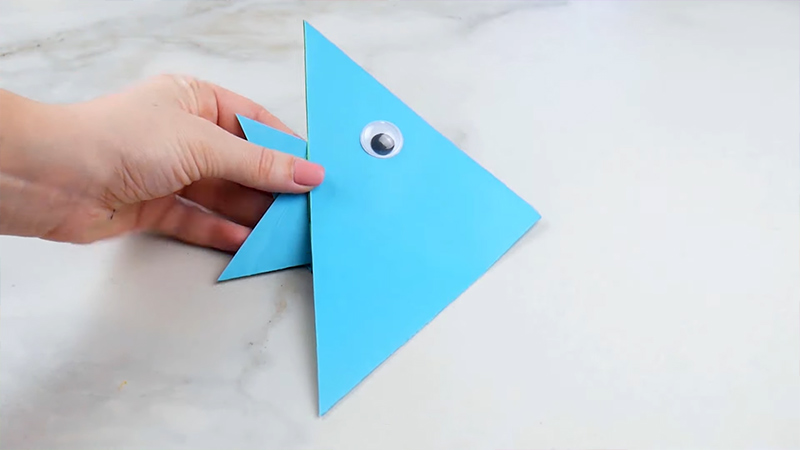
What Is Origami for Kids? -The Definition
Origami for Kids is a captivating and educational paper-folding craft designed to engage young minds in a world of creativity and learning.
Derived from the Japanese art of origami, this activity simplifies the intricate folds and complex designs to make them accessible and enjoyable for children of all ages.
Origami offers a myriad of benefits for kids. It enhances fine motor skills as they meticulously fold paper, improving hand-eye coordination and precision.
Additionally, it promotes patience and perseverance as youngsters follow step-by-step instructions to create intricate shapes, animals, and objects.
One of the most remarkable aspects of origami is its ability to spark imagination. Kids can transform a flat sheet of paper into three-dimensional wonders, fostering their artistic expression.
Moreover, origami introduces fundamental mathematical concepts like symmetry, geometry, and spatial awareness in a fun and hands-on way.
Origami for kids is not just a craft; it’s a tool for developing problem-solving abilities and boosting self-esteem when children proudly display their folded creations.
With its simplicity, affordability, and boundless creative possibilities, origami is an enriching and entertaining activity that stimulates young minds while nurturing their artistic talents.
Origami for 7-Year-Olds
Origami is a wonderful craft for 7-year-olds as it helps improve fine motor skills, concentration, and patience.
Here are 6 easy origami projects suitable for 7-year-olds children:
1. Origami Boat
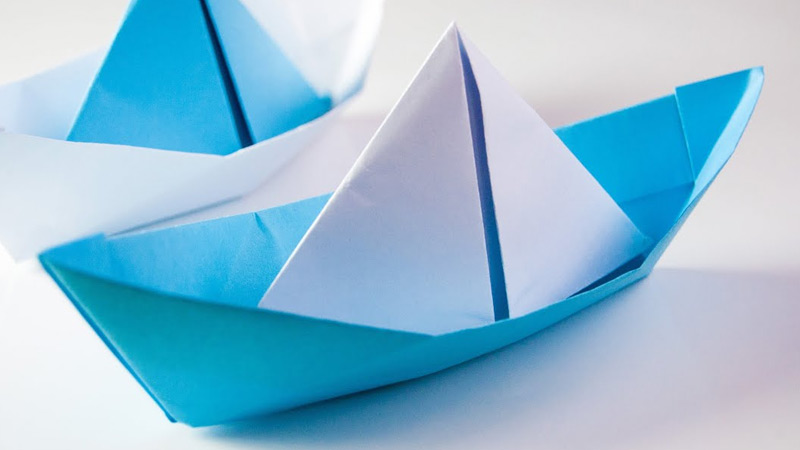
Create a simple origami boat that actually floats. All you need is a rectangular sheet of paper.
Here are the steps:
- Fold the paper in half lengthwise.
- Open it up and fold the two sides towards the center crease.
- Fold the top part down to create a triangle.
- Flip the paper over and fold the other triangle.
- Open it up slightly to form the boat shape.
2. Origami Frog
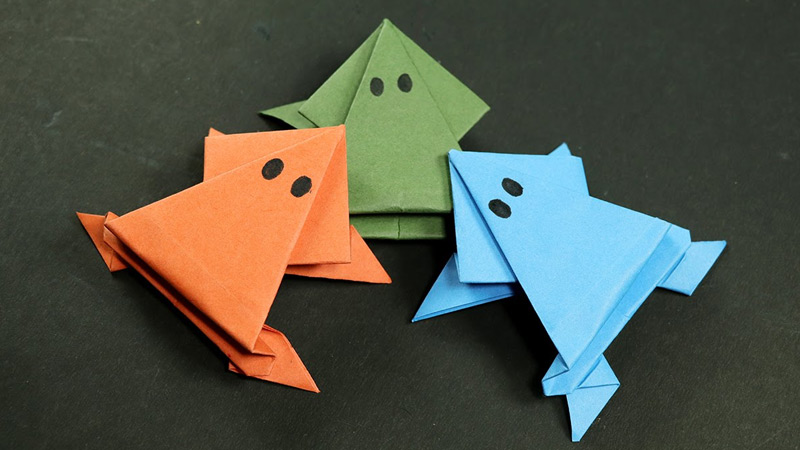
Kids will love making this jumping origami frog.
Here’s how:
- Start with a square piece of paper.
- Fold it in half diagonally to form a triangle.
- Fold the two bottom corners up to meet at the top point.
- Flip the paper over and fold the bottom edge up about a third of the way.
- Fold the top flap down to create a head.
- Your frog is ready to jump!
3. Origami Star
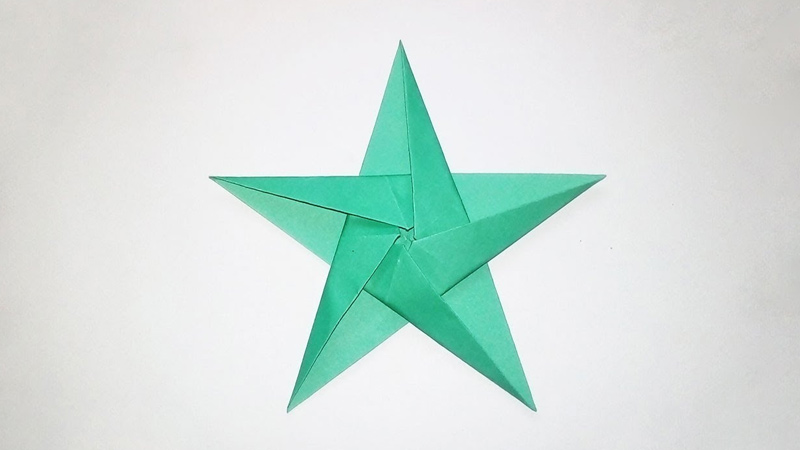
Create a beautiful origami star with five points.
You’ll need a square piece of paper, and here are the steps:
- Fold the square in half diagonally to form a triangle.
- Fold the triangle in half again to create a smaller triangle.
- Unfold and you’ll have a crease down the middle.
- Fold the left and right corners in toward the center along the crease.
- Flip the paper over and fold the bottom tip up.
- Unfold the two flaps you created earlier, and your star is complete.
4. Origami Butterfly
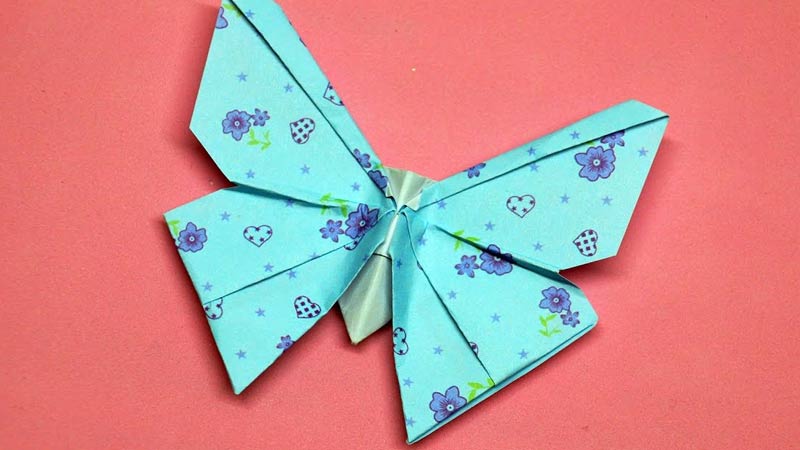
Make a simple origami butterfly with these steps:
- Start with a square piece of paper.
- Fold it in half diagonally to form a triangle.
- Fold the triangle in half again to make a smaller triangle.
- Unfold one of the flaps to create a wing.
- Repeat on the other side.
- Add details like eyes and antennae with markers.
5. Origami Dog
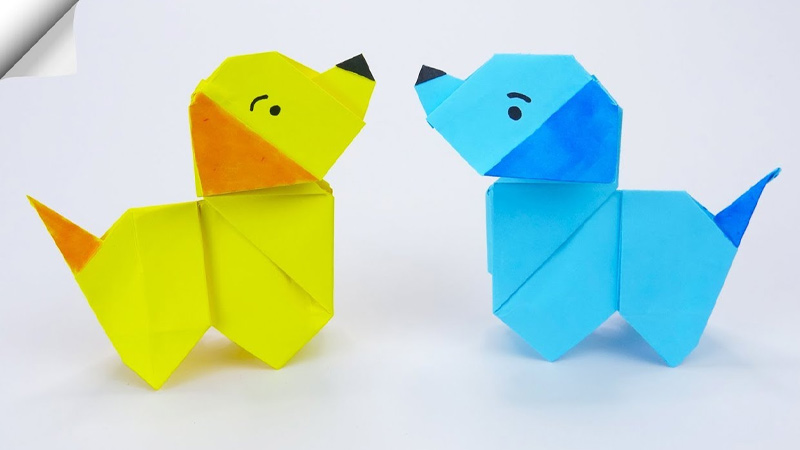
Create an adorable origami dog with these steps:
- Begin with a square piece of paper.
- Fold it in half diagonally to make a triangle.
- Fold the top layer of the triangle down about a third of the way.
- Flip the paper over and fold the bottom corners up for the paws.
- Add eyes, nose, and mouth with markers.
6. Paper Airplane
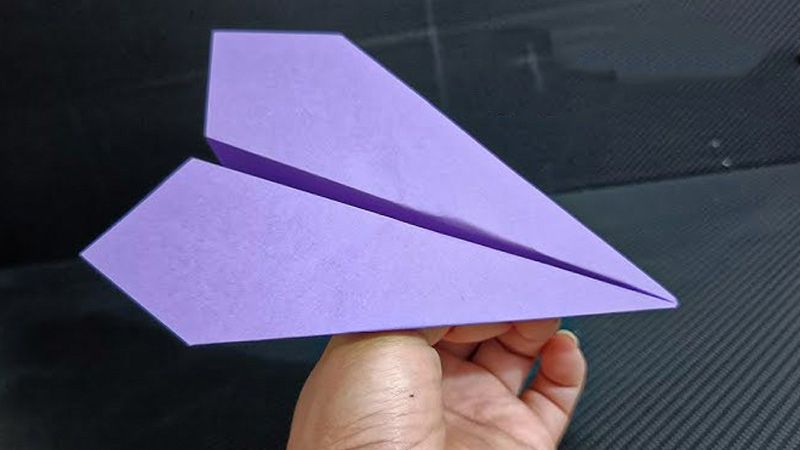
While not exactly traditional origami, paper airplanes are simple to make and can be a lot of fun for kids. Fold a standard piece of paper into a classic dart or glider shape.
Easy Origami for 8-Year-Olds
Origami can be a great activity for 8-year-olds, helping to improve their fine motor skills and concentration.
Here are 6 easy origami projects suitable for 8-year-olds children:
1. Origami Cat Face
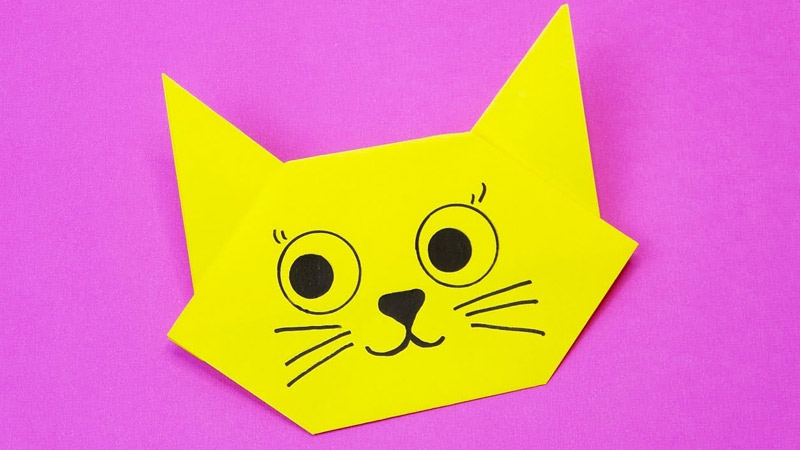
- Start with a square piece of paper.
- Fold it in half diagonally to create a triangle.
- Unfold and fold the two top corners down to meet at the center crease.
- Draw or glue on eyes, a nose, and whiskers to create a cat face.
2. Origami Flower
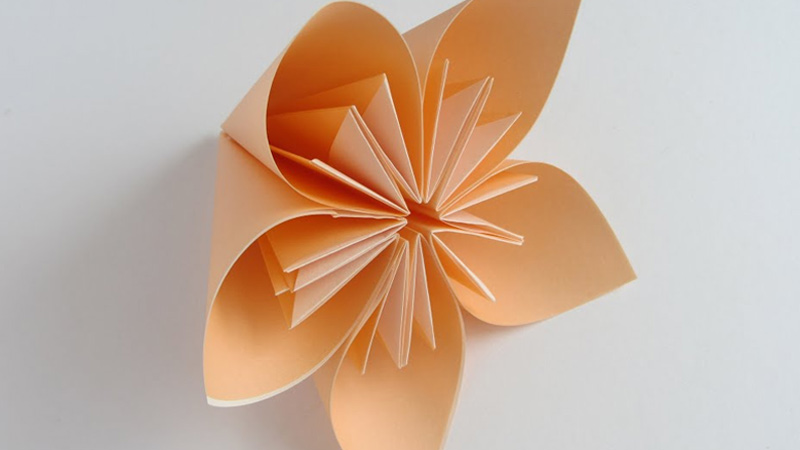
- Begin with a square piece of paper.
- Fold it in half diagonally to form a triangle.
- Fold the triangle in half again to make a smaller triangle.
- Open it up and fold the three corners toward the center.
- Flip it over, and your simple origami flower is complete.
3. Origami Butterfly

- Start with a square piece of paper.
- Fold it in half diagonally to make a triangle.
- Fold the triangle in half again to create a smaller triangle.
- Unfold one of the flaps to create a wing.
- Repeat on the other side.
- Decorate with markers for added detail.
4. Origami Frog
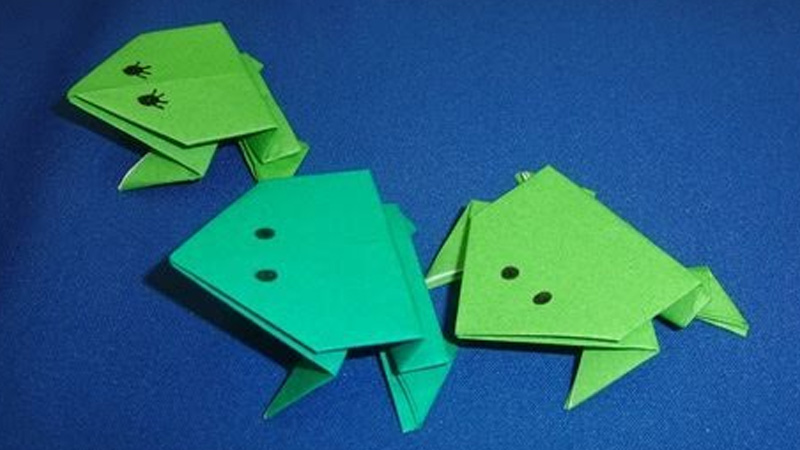
- Use a square piece of paper.
- Fold it in half diagonally to form a triangle.
- Fold the bottom part up to make the frog’s legs.
- Flip it over and fold the top part down to create the head.
- Draw eyes, mouth, and other details to make it look like a frog.
5. Origami Heart
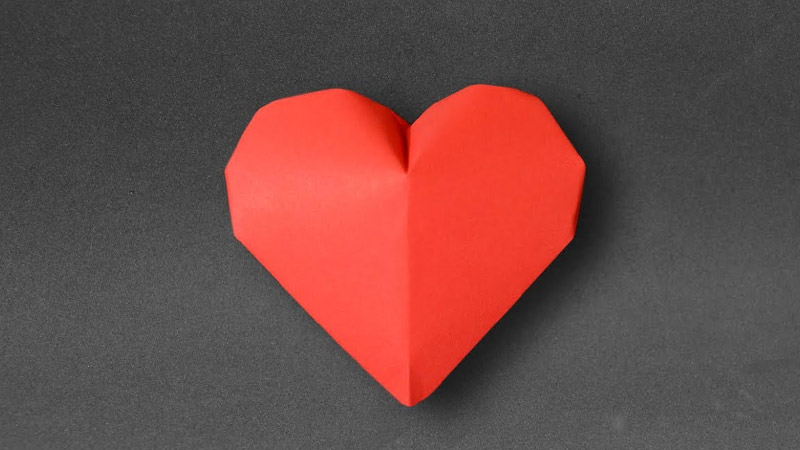
- Begin with a square piece of paper.
- Fold it in half diagonally to form a triangle.
- Fold the two bottom corners up to meet at the top point.
- Unfold and fold the sides inwards to create a heart shape.
- You can also add a smaller heart inside by folding the top down.
6. Origami Penguin
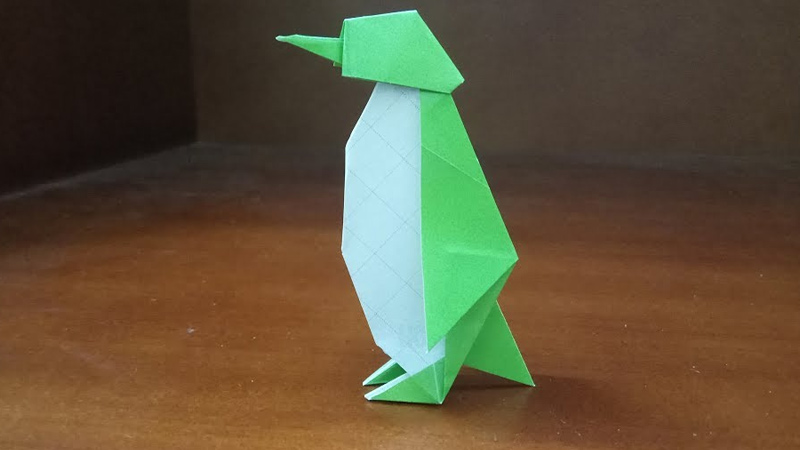
- Start with a square piece of paper.
- Fold it in half diagonally to make a triangle.
- Fold the bottom corners up to create the penguin’s feet.
- Fold the top part down to make the head.
- Draw eyes, a beak, and a belly on the penguin.
Easy Origami for 10-Year-Olds
Origami can be a fun and challenging activity for 10-year-olds, helping to develop their fine motor skills, patience, and concentration.
Here are 7 relatively easy origami projects suitable for 10-year-olds children:
1. Origami Fortune Teller
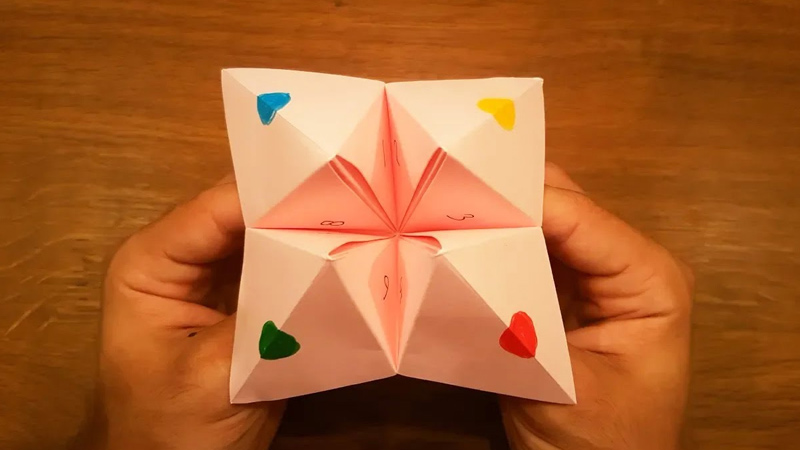
- Start with a square piece of paper.
- Fold it diagonally in both directions, then unfold.
- Fold all four corners to the center.
- Flip it over and fold all four corners to the center again.
- Fold it in half and tuck your fingers under the flaps to make it interactive. You can write messages or numbers inside each flap for a game.
2. Origami Star Box
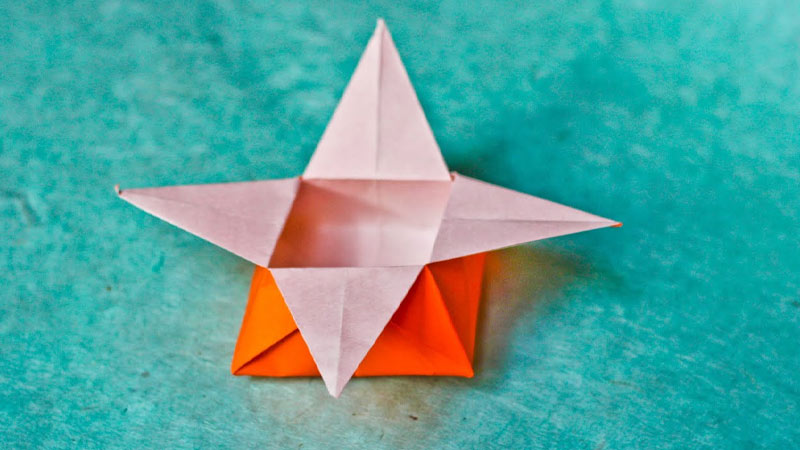
- Begin with a square piece of paper.
- Fold it in half diagonally to create a triangle.
- Unfold and fold it in half diagonally the other way.
- Unfold and flip the paper over.
- Fold it in half horizontally, then unfold.
- Push the center of the paper inward, collapsing it into a square shape.
- Fold the four corners to the center to form the box.
3. Origami Ninja Star (Shuriken)
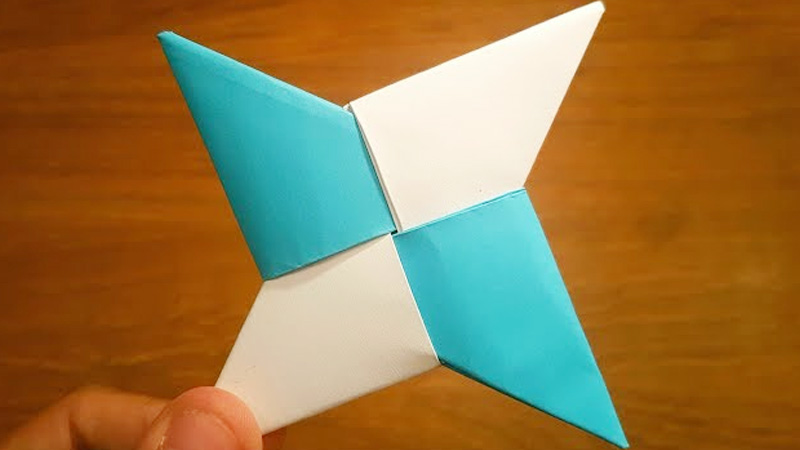
- Start with two square sheets of paper.
- Fold both sheets in half diagonally to create triangles.
- Fold each triangle in half again.
- Unfold and fold the top layer of each triangle down to make smaller triangles.
- Assemble the two pieces together to form a ninja star.
4. Origami Elephant
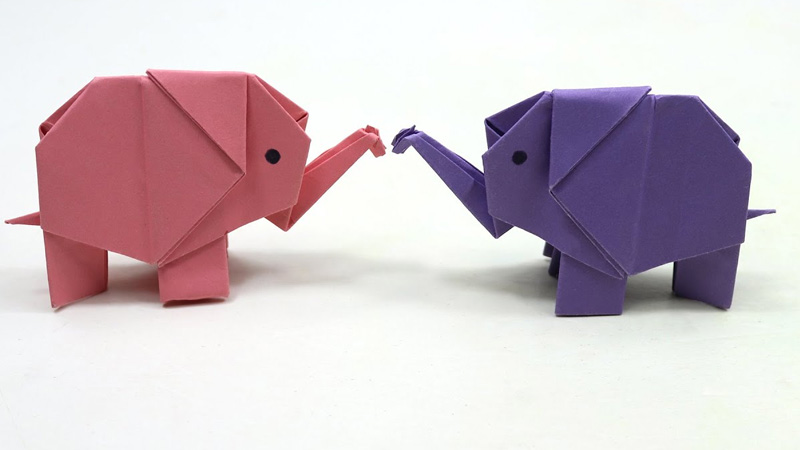
- Begin with a square piece of paper.
- Fold it in half diagonally to create a triangle.
- Fold both sides of the triangle in toward the center crease.
- Flip it over and fold the top down for the head.
- Add eyes and other details with markers.
5. Origami Jumping Frog
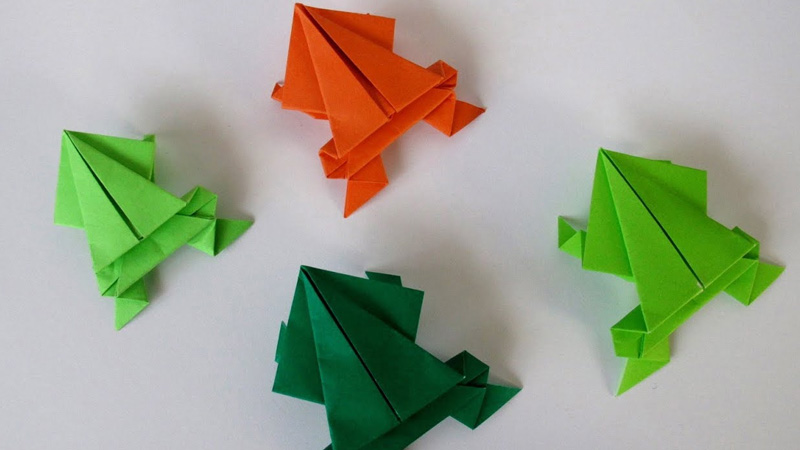
- Start with a square piece of paper.
- Fold it in half diagonally to make a triangle.
- Fold the two bottom corners up to meet at the top point.
- Fold the top flap down to create a head.
- Add eyes and draw legs for your jumping frog.
6. Origami Dragon
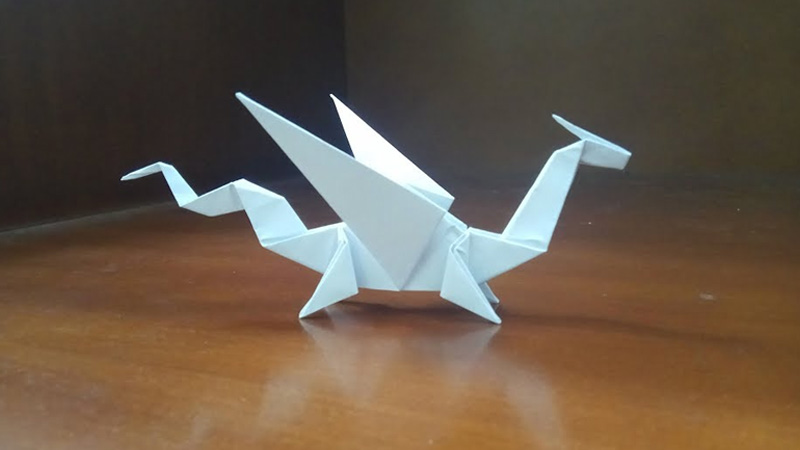
- This one is a bit more challenging, but older kids may enjoy it.
- Start with a square piece of paper.
- Follow a step-by-step origami dragon tutorial or diagram, which you can easily find online or in origami books.
7. Origami Star Wars X-wing Fighter
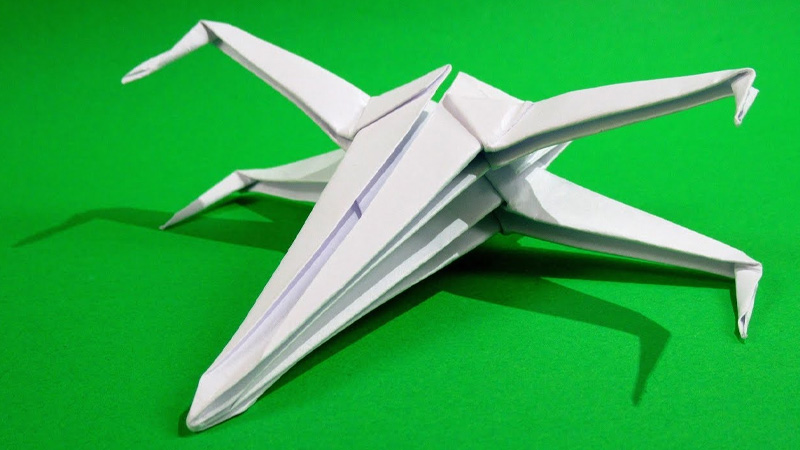
- Start with a square piece of paper.
- Fold it in half diagonally to create a triangle.
- Fold the two bottom corners up to meet at the top point.
- Fold the top flap down to create a head.
- Fold the two side flaps down to create wings.
- You can decorate the X-wing Fighter with markers to make it look like a Star Wars spaceship.
What Is the Purpose of Origami for Kids?
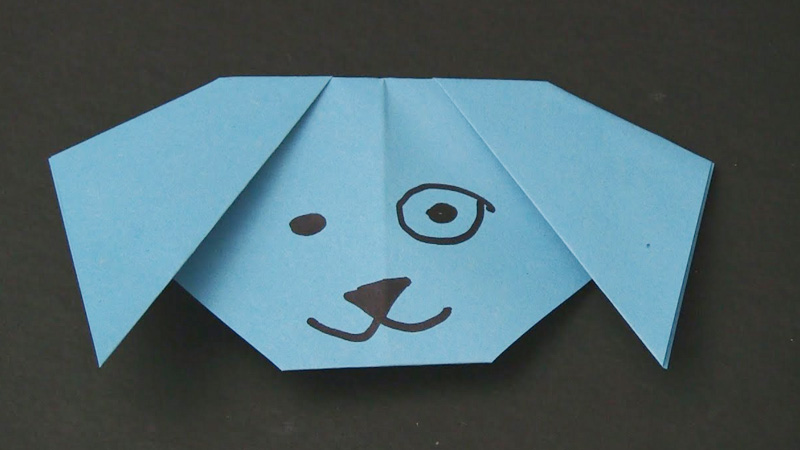
Origami for kids serves several valuable purposes, both educational and recreational.
Here are some of the key purposes of origami for children:
Develops Fine Motor Skills
Origami involves precise folding and creasing of paper, which helps children improve their fine motor skills.
This can be particularly beneficial for young children who are still developing their hand-eye coordination.
Enhances Spatial Awareness
Origami requires an understanding of spatial relationships and geometry as children manipulate paper to create specific shapes and figures. This can improve their spatial awareness and problem-solving abilities.
Encourages Patience and Focus
Completing origami projects often requires patience and concentration. Children learn to follow step-by-step instructions, which helps them develop focus and attention to detail.
Boosts Creativity
While origami often involves following instructions to create specific models, it also allows for creativity and personalization.
Children can experiment with different colors, sizes, and designs, fostering their creative thinking.
Teaches Math Concepts
Origami can introduce basic mathematical concepts, such as symmetry, angles, and fractions, in an engaging and practical way. This can make math more accessible and enjoyable for kids.
Cultural Appreciation
Origami has its roots in Japanese culture, and engaging in this art form can provide an opportunity for kids to learn about and appreciate different cultures and traditions.
Stress Reduction
Origami can be a relaxing and meditative activity. It can help children (and adults) unwind and reduce stress by focusing their attention on the repetitive and calming motions of folding paper.
Boosts Confidence
Completing origami projects can give children a sense of accomplishment and boost their self-esteem. As they master more complex designs, they gain confidence in their abilities.
Encourages Problem-Solving
Origami often involves overcoming challenges and figuring out how to fold paper to achieve a specific result. This encourages critical thinking and problem-solving skills.
Promotes Environmental Awareness
Origami typically uses simple materials like paper, which can promote environmental awareness and sustainability by emphasizing the importance of reusing and recycling.
Fosters a Love for Learning
Engaging in origami can be a fun and enjoyable way for kids to learn. It can spark curiosity and a lifelong interest in art, science, and mathematics.
FAQS
Is origami just about folding paper into shapes?
While origami does involve folding paper, it’s not limited to simple shapes.
Can young children start learning origami?
Yes, young children can start learning origami, but it’s essential to choose age-appropriate projects.
Are there educational benefits to teaching kids origami?
Yes, origami offers several educational benefits. It can help improve fine motor skills, enhance spatial awareness, and develop patience and concentration.
Do kids need special origami paper, or can they use regular paper?
While origami paper is designed for folding and comes in various colors and sizes, kids can start with regular paper to learn the basics.
Can origami be a group activity for kids?
Absolutely! Origami can be a fun group activity for kids, fostering collaboration and creativity.
Conclusion
Origami for kids is not merely the art of folding paper; it’s a gateway to creativity, education, and fun. Through this ancient craft, children can embark on a journey of self-expression, turning simple sheets of paper into captivating shapes and creatures.
It nurtures fine motor skills, spatial awareness, and patience, all while providing a canvas for their imagination to flourish.
Origami isn’t limited by age, making it accessible and enjoyable for kids of various developmental stages.
Whether it’s a playful frog, an intricate dragon, or a colorful paper plane, origami empowers children to explore the world of art and learning one fold at a time, fostering skills and memories that can last a lifetime.
Leave a Reply